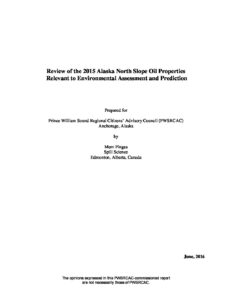Oil spill modeling and prediction are important facets of oil spill preparedness. The most important estimation and modeling algorithms are that for oil spill emulsification, evaporation, chemical dispersibility, and those that might be used to predict other countermeasures such as mechanical recovery and burning.
Oil spill modeling relies on algorithms that require a number of oil property inputs The 2015 sample of ANS oil was found to be similar to the North Slope oils analyzed in 2013 but different from those in the more distant past. It was much lighter and less viscous than those much older samples, but similar to the 2009 and 2013 samples. The environmental behavior parameters of evaporation, emulsification and dispersibility were predicted.
These show that they are similar and indicative of a medium oil. The new ANS is a medium oil that does not form emulsion, is dispersible and evaporates to an extent.
